 |
| A Goat Hair Brush & A Combination Brush |
Choosing A Brush for Chinese Calligraphy
Chinese calligraphy is practiced with Chinese writing brushes and Chinese ink (usually Pine Soot Ink.) This art is not supposed to be done with watercolor brushes, pens, dye, or Indian ink. Choosing the appropriate brushes will help the students to progress further in practicing Chinese calligraphy in an effective and efficient way. (Chinese writing and painting brushes are somewhat different in their characteristics and purposes.)
Chinese calligraphic brushes can be categorized by:
1. Types of hairs used
2. Sizes
Brushes for Chinese calligraphy categorized by hairs used generally include the following:
Weasel Hair Brush (looks brown when it is new) (Wolf
Hair Brush is a popular misnomer)
Goat Hair Brush (looks pure white when it is new)
Combination Brush (usually mixed with weasel, goat or rabbit hairs)
A beginner may choose a soft Goat Hair Brush or a robust Combination Brush for their first style which is usually Kai Style. †
 |
| A Goat Hair Brush & A Combination Brush |
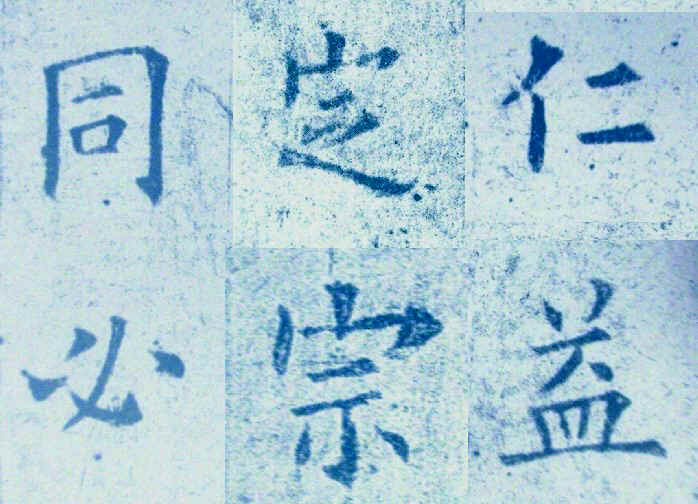 |
| A sample of Kai Style writings |
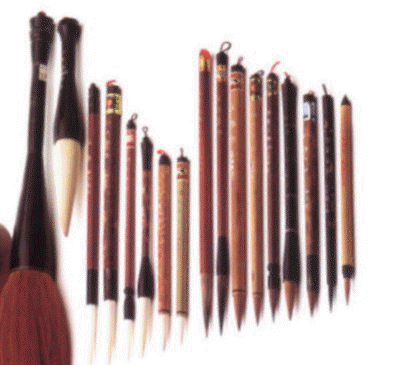 |
| Different kinds and sizes of brushes |
Usually a larger brush is used to write larger characters and a smaller brush is used for smaller characters. When writing each stroke of a Chinese character, usually we use a tiny portion (say 1/5 to 1/3) of the brush hair to write, but not to bent the brush by pressing the whole hair.
|
|
|
|
There are four requirements of a good brush which are commonly referred to as the "Four Virtues of A Brush."
1. "Pointedness" means it should be as sharp or pointed as an awl at the tip.
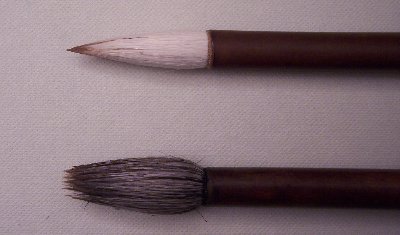 |
|
| A new brush has pointedness.
An old one eventually loses itís pointedness. |
2. "Roundness" means the tip must be in the center of the hairs.
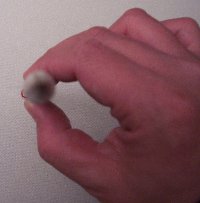
|
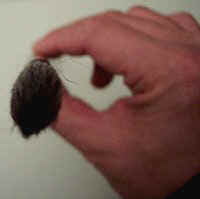
|
| A brush with roundness | A brush without roundness |
3. "Evenness" means that when we spread the brush by pressing it down, the hairs are even and not
scattered or twisted.†
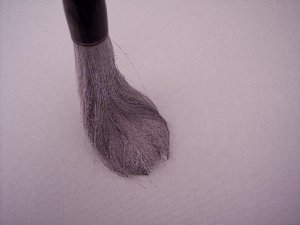 |
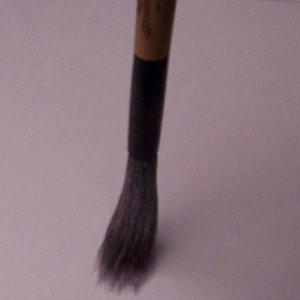 |
| Without evenness when pressed | With evenness when pressed |
4. "Strength" or
"Resilience" means the tip of the brush hairs is flexible or elastic. For a brush to be strong, it must contain enough hairs to be solid. If we squeeze the root of the hairs and it feels hollow, it's not a
solid brush and it won't generate enough strength at its tip during writing.
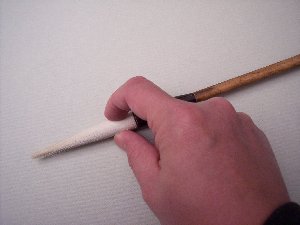 |
| Squeeze the root of hairs to test solidness |